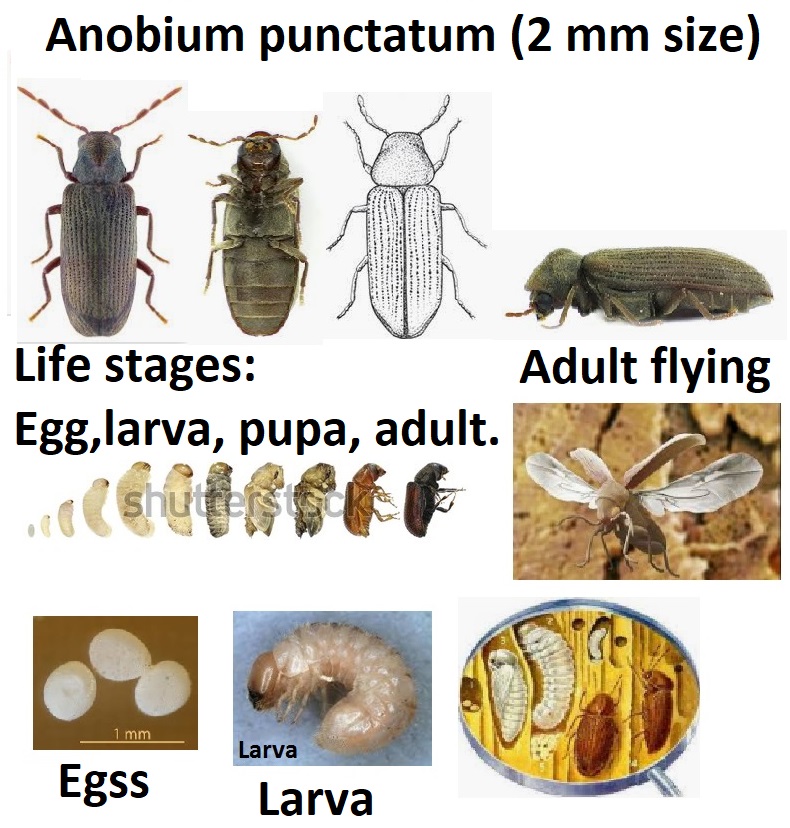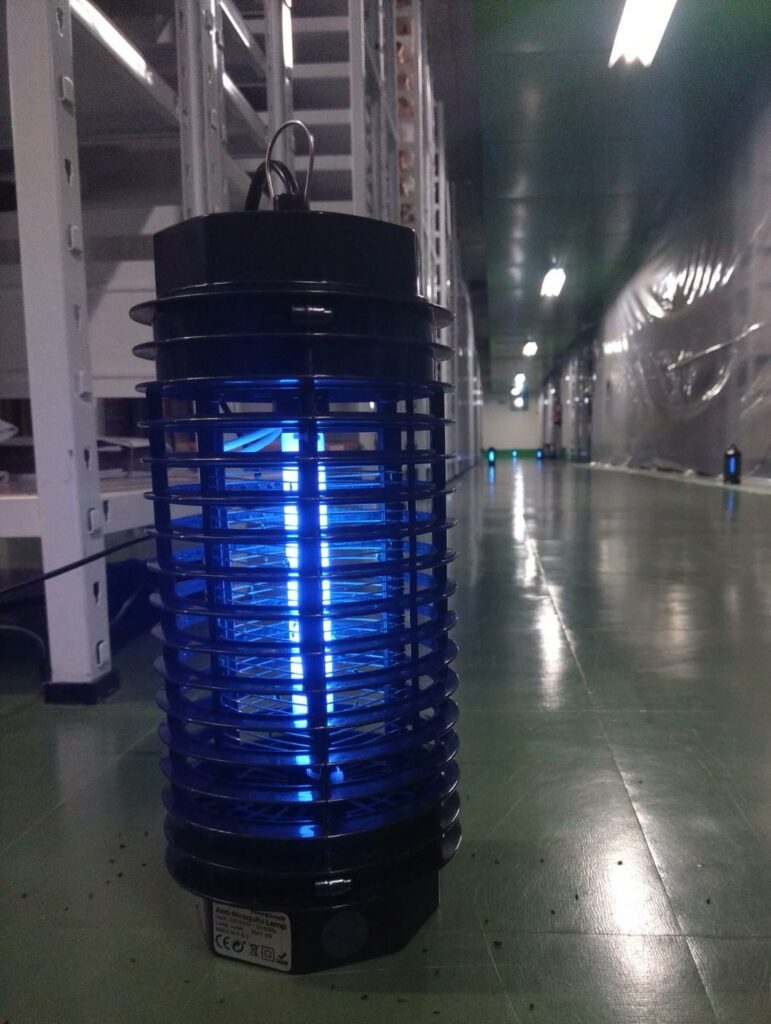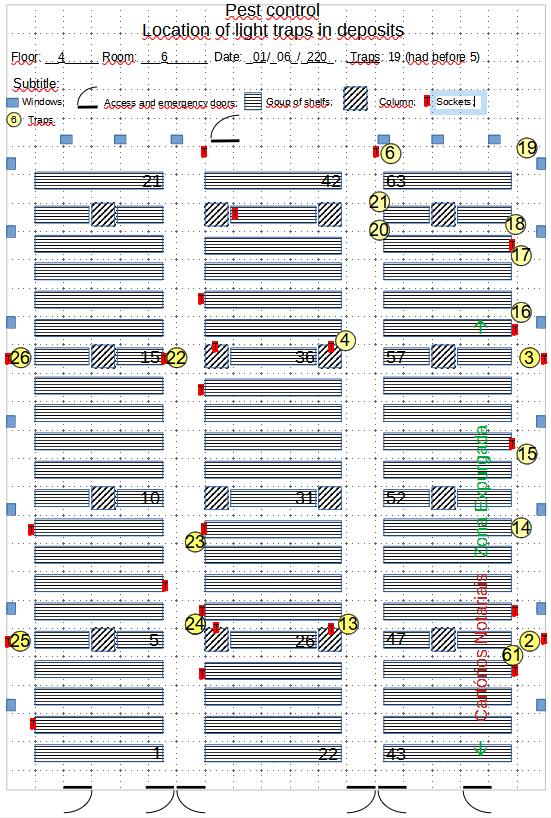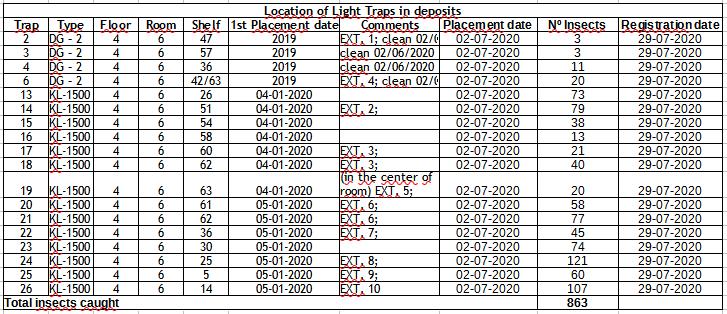
Infestations in collections are a common problem in archives. This issue has been monitored throughout the years by the people in charge at the National Archives Torre do Tombo (ANTT).
The ANTT has two anoxic disinfestation chambers that use nitrogen. The first chamber is 1.5 m3 wide and the second has a capacity of approximately 4.5 m3 and 25 linear meters.
The disinfestation process, since it implies moving the documentation to the chambers, allows the hygienization of the spaces that are temporarily empty
However, considering the various infestation foci, the dimensions of the archive (over 100 linear quilometers of documentation), the impossibility of disinfesting the whole collection at once, as well as the legal obligation to incorporate new documentation, it was necessary to rethink the problem and use a new approach to reinforce the disinfestation process.

To work in reducing the insect population in its adult phase, while continuing to use the anoxic desinfestation process throughout the year.
It is known that insects are attracted to light. Therefore, in Spring, we’ve placed electrocuting light traps in the hallways identified as infested, in three rooms of two repositories, that were numbered and maped.
In summary, three of the proposed objectives are presented:
1) Try to capture / eliminate as many infesting insects as possible, in order to complement the purge work performed by the anoxia chamber;

2) Through the geographical layout of the traps in each room, try to identify the most infested documentation, in order to guide the next purging work in the anoxia chamber;

3) Try to understand if in the areas of disinfected documentation vs. areas that have not yet been disinfected, they present a difference in weed occupation.
A month later, the insects captured in each trap were counted to try to identity the worst infested areas in the room, to proceed to the anoxic desinfestation of this documentation.
Conclusions:
It is important to realize that the fact that insects are found in a certain trap does not indicate that they come from an area that is necessarily close. However, this is very likely to happen, always taking into account the layout of the remaining traps in the room.
1) Floor 4, Room 6: Documentation of Notary Offices where disinfestation work has been carried out in the anoxia chamber since June 2016.
863 insects were captured in this room, revealing that the disinfested area has, in most cases, a lower number of insects, although with occasional situations, with an average similar to other areas in the room.
It was possible to notice that the room has an even high level of infestation and with a certain homogeneity, since in more isolated traps locations an approximate number of insects were captured than in the most concentrated area.
Luís de Vasconcellos e Sá, Senior Technician / Conservation and Restoration Office, Ana Isabel Fernandes (trad.), Senior Technician / Communication Office, Torre do Tombo National Archive General Directorate of Books, Archives and Libaries, Portugal

